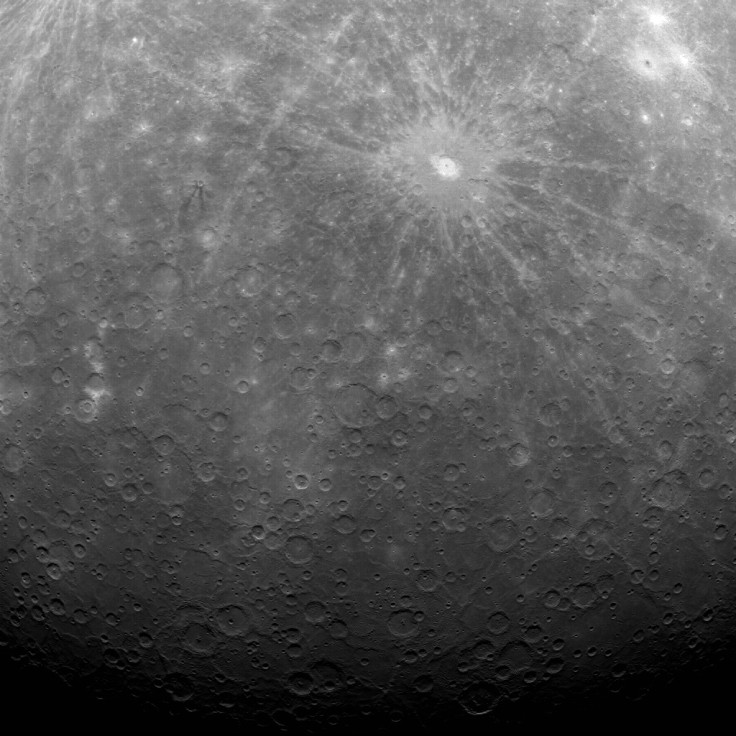As Konstantin E. Tsiolkovsky, the father of Rocketry, said, "Earth is the cradle of humanity, but one cannot remain in the cradle forever." True to his word, we as a civilization are already taking steps to pierce the veil that is space and figure out what lies for us out there in its vastness.
That same curiosity has also led us to want to know more about our solar system in search of knowledge that helps us know more about the origins of the solar system, the universe, and our home planet at the same time.
As such, in August 2004, NASA launched the spacecraft that would help us see Mercury up-close for the first time since its discovery in 1631, per NASA.
Here is that spacecraft's story and journey to the first planet in our solar system:

MESSENGER Spacecraft - Reaching The X Mark
Mercury is a planet 191.85 million kilometers away from Earth and is the planet nearest to the sun, with it being only 58.168 million kilometers away from our star, according to NASA's measurements.
Thanks to its distance from the Earth, the planet can only be looked at through telescopes and observatories since 1631. However, even then, we had a good idea of what Mercury looked like.
We just couldn't look at it up close.
NASA would later provide the solution to that problem with the launching of the Mercury Surface, Space Environment, Geochemistry and Ranging (MESSENGER) spacecraft on August 3, 2004, at 6:15 UT.
NASA hoped that the spacecraft would help experts to reveal more about Mercury - its density, geologic history, magnetic field, core, unusual materials at its poles, and its volatiles, per the MESSENGER spacecraft's website from The Johns Hopkins University Applied Physics Laboratory.
The spacecraft took seven years to reach its target planet. However, doing the journey toward the solar system's first planet, it made one flyby of Earth, two flybys of Venus, and three flybys of Mercury, allowing it to take pictures of Earth and Venus at the same time.
Although the spacecraft made three flybys of Mercury, it wasn't near enough for it to get caught in the planet's gravity, which would allow it to orbit around Mercury.
Read More : Newly Introduced Inflation Reduction Act Gives $40,000 Incentive to Electric Trucks like Tesla Semi
However, that time came on March 18, 2011, seven years after it was launched from Earth. With this opportunity, the spacecraft took thousands of images of the surface of Mercury, which it sent back to Earth.
These photos were our first close-up look into Mercury's surface, which, while not unexpected, was a welcome surprise as it allowed astronomers to study the planet's surface and numerous craters.
Thanks to these photos, astronomers now know that Mercury has water ice at its poles, which were the unusual materials spotted before. It also revealed that water is also present in Mercury's exosphere.
Additionally, MESSENGER's picture helped scientists understand its surface, with it being filled with craters.
Space.com mentioned in its report that experts named some of these craters to better remember them, such as the Debussy and Matabei craters, which were the brightly rayed crater and the unusually dark rayed crater in the photo feature4d above.
NASA would later extend its commission past its original 2011 expiration date for four more years until the space agency had it crash into the planet it orbited for so long on Jan. 21, 2015.
MESSENGER Spacecraft Details
NASA's MESSENGER spacecraft had nine scientific instruments for it to help experts understand the first planet better. It has a Mercury Dual Imaging System, Gamma-ray, Neutron, and X-Ray spectrometers, magnetometer, Mercury Laser Altimeter, Mercury Atmospheric, and Surface Composition Spectrometer, Energetic Particle and Plasma Spectrometer, and Radio Science Experiment.
The probe cost NASA $446 million, but the data it sent back to Earth made it worth every penny spent on it and its launch.
During its lifetime, it was able to take 100,000 photos of Mercury and photos of Venus, Earth, and its moon, as well as the comets 2P/Encke and Comet C/2012 S1.
It was able to orbit mercury for four years, which was more than what was expected of it.
Related Article : #SpaceSnap The History of Earthrise, the Most Popular Photo of Earth









